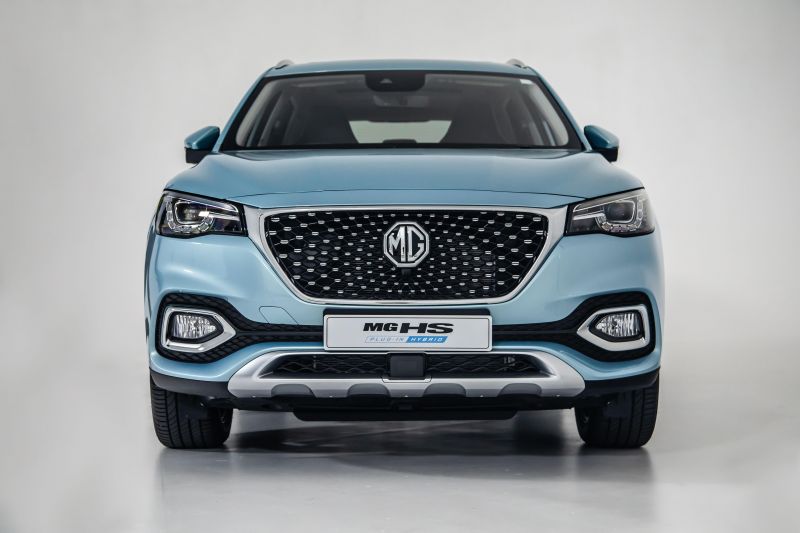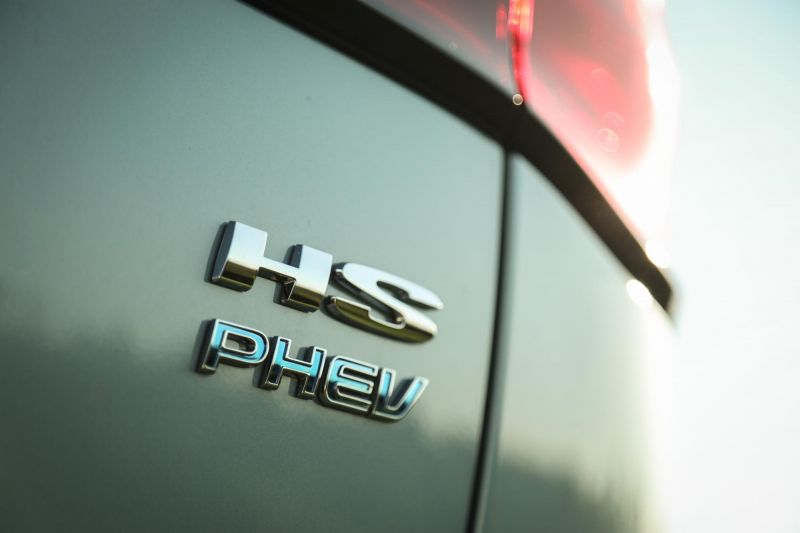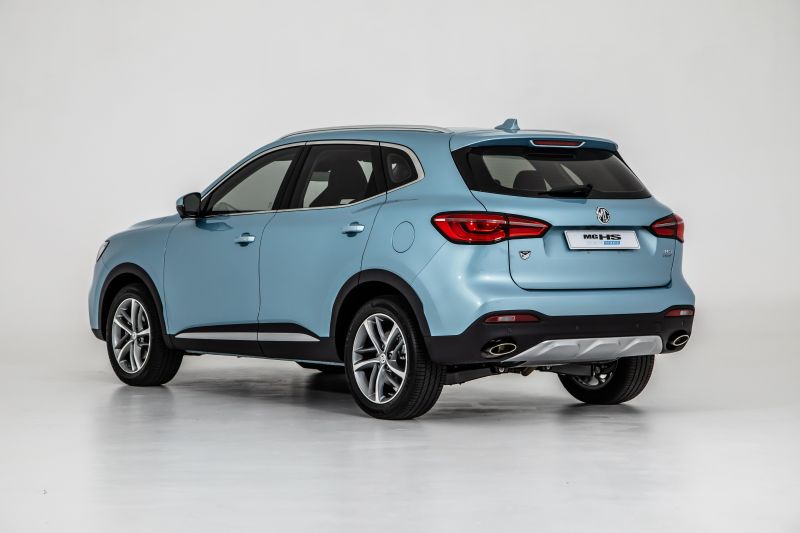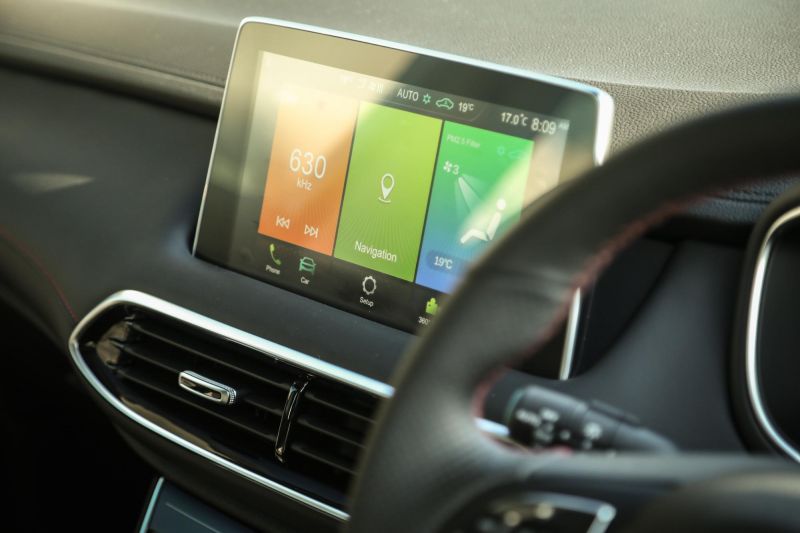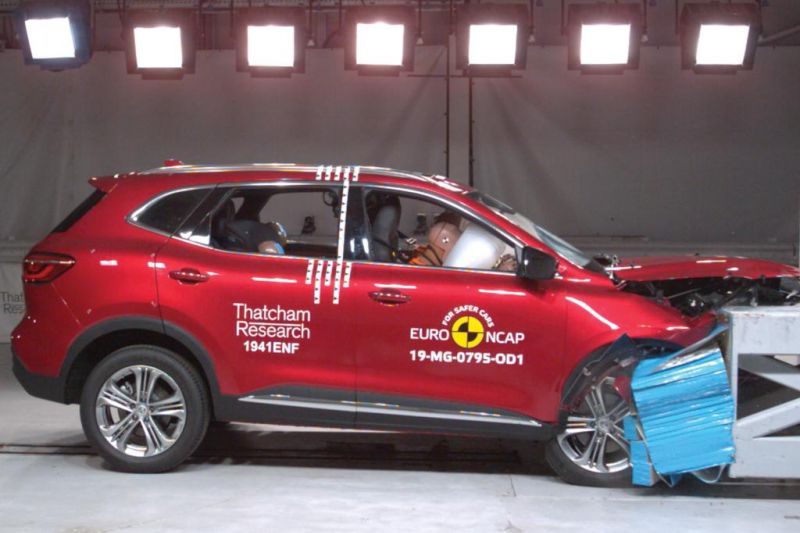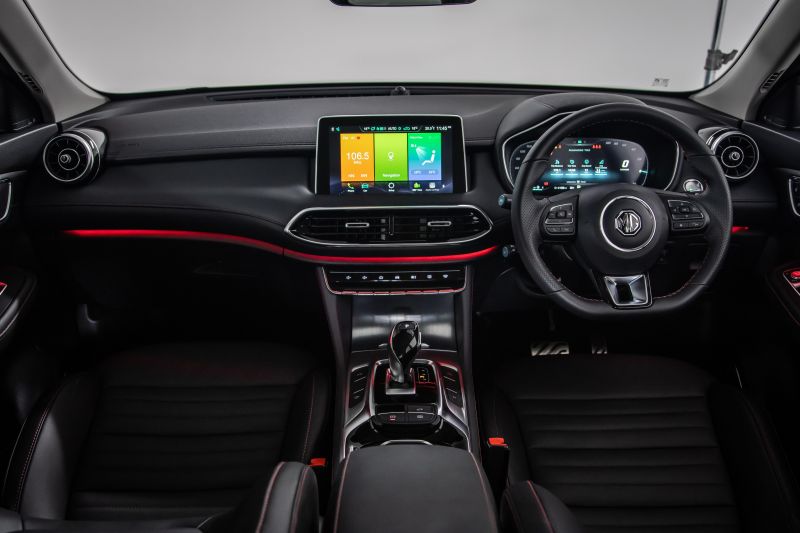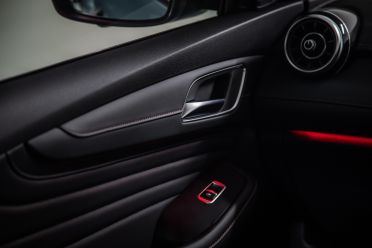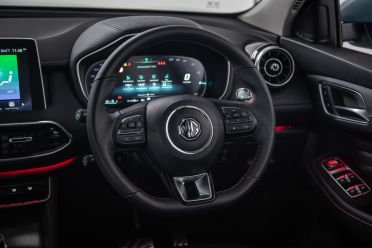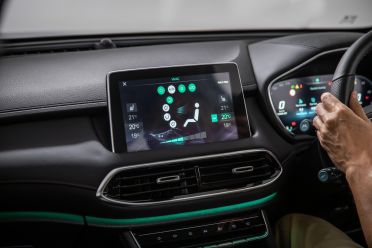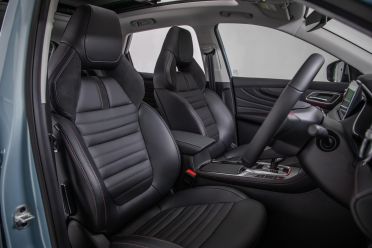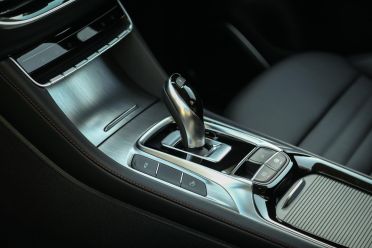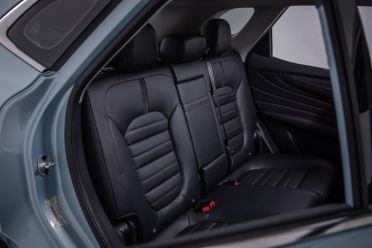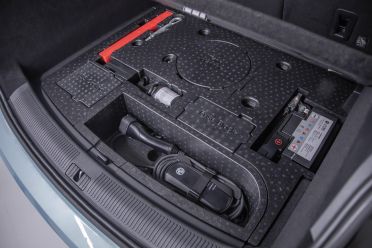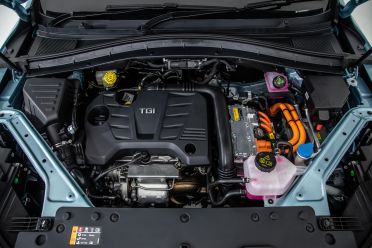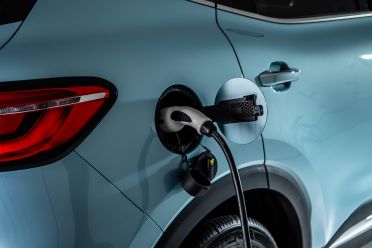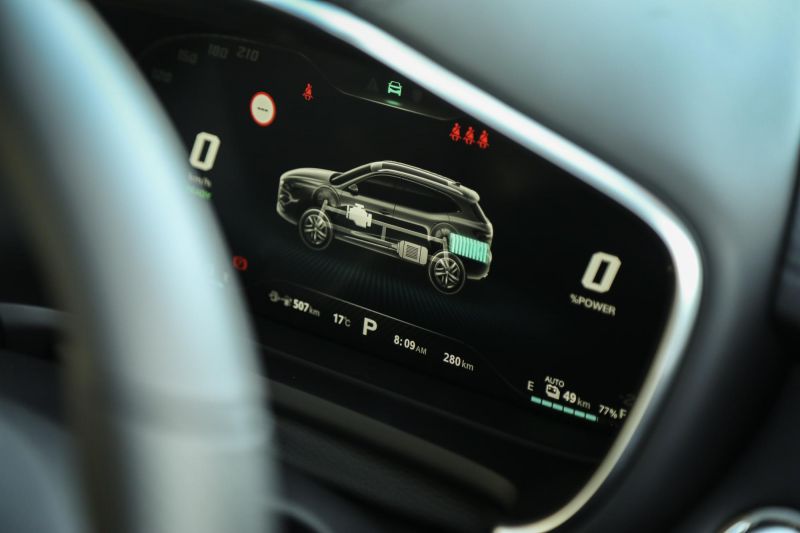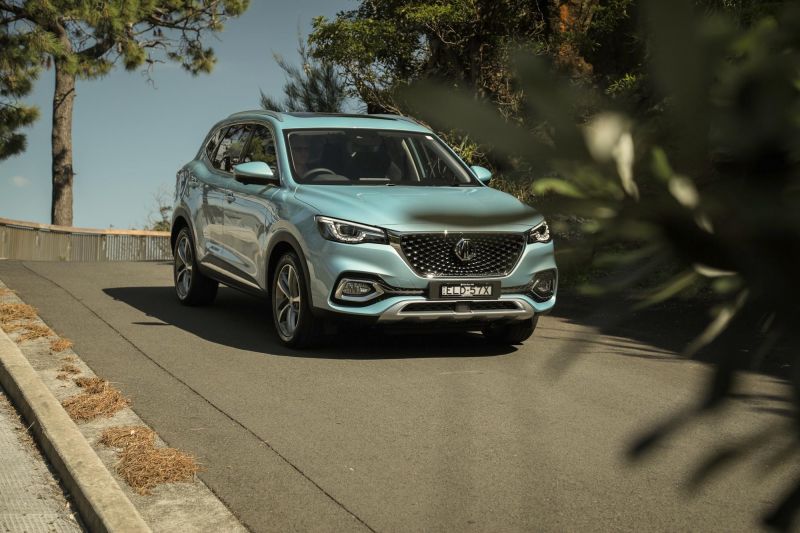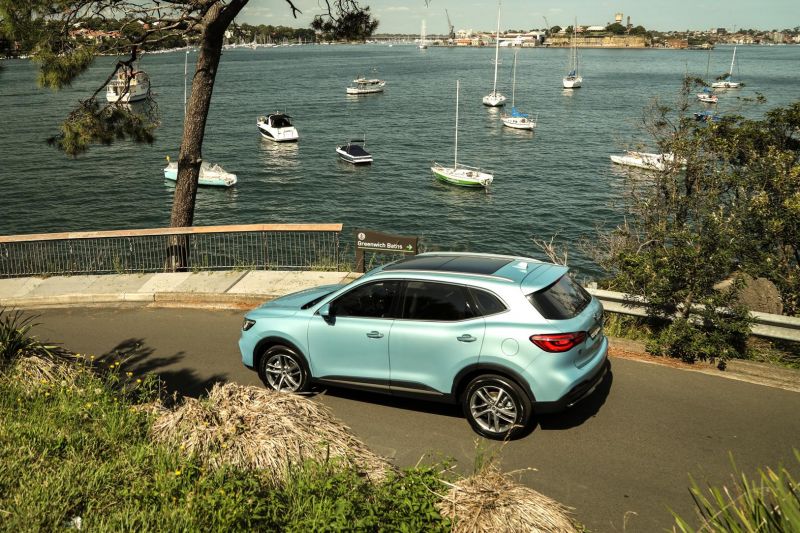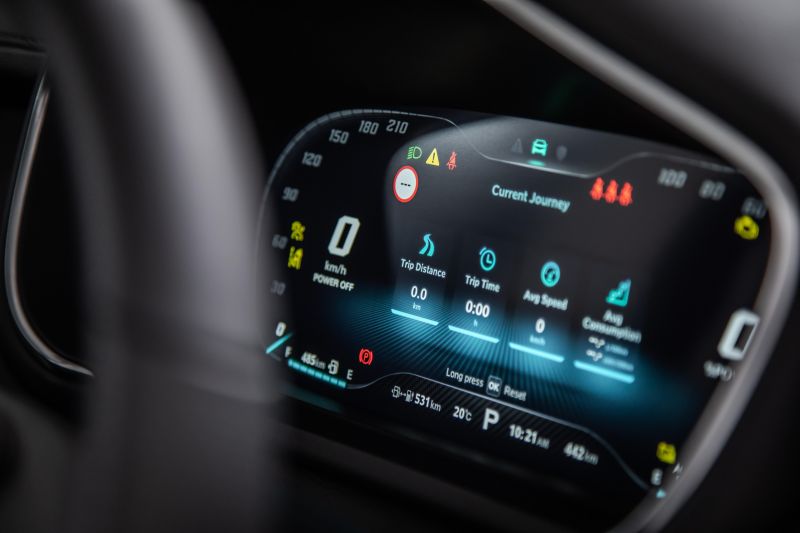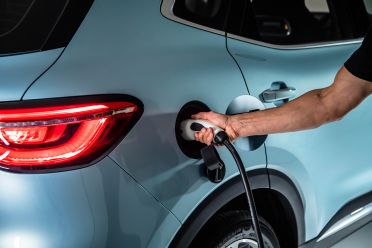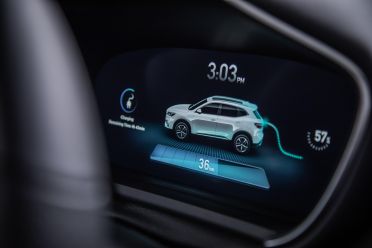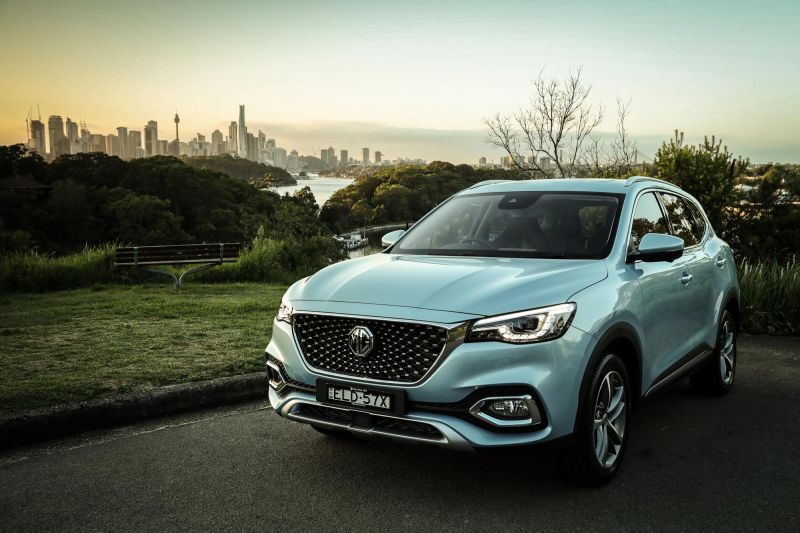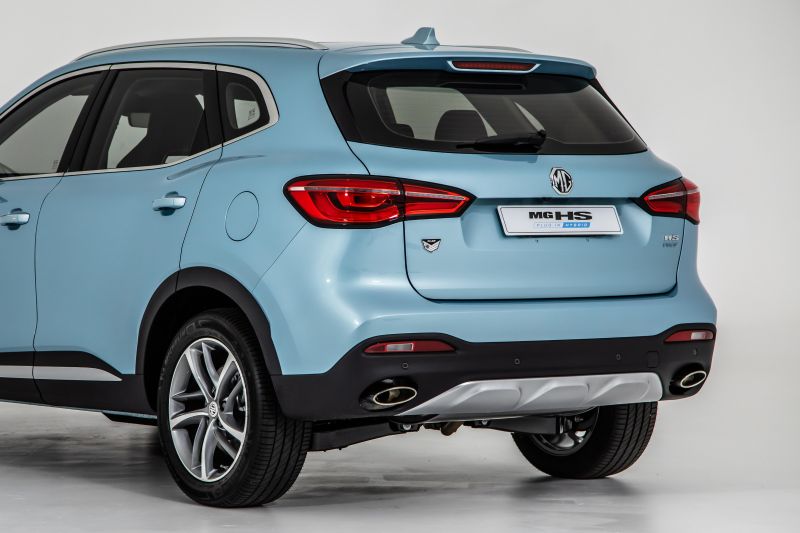Last year, 1685 plug-in hybrid vehicles were sold locally according to VFACTS data. That was less than the 1755 recorded all-electric vehicle sales and considerably less than the 60,417 hybrids.
It’s safe to say there’s a lack of awareness of plug-in hybrids and a lack of products, period.
Enter the 2021 MG HS Plug-In Hybrid. It has precisely one direct rival, the Mitsubishi Outlander PHEV, at least until the Ford Escape PHEV arrives later this year. Everything else in the plug-in hybrid space wears a luxury brand name.
MG’s marketing team has its work cut out for it, as it’s introducing its first local plug-in hybrid just months after its first pure-electric vehicle. That’s in stark contrast to most rivals, who either offer only hybrids (Toyota), only plug-in hybrids (Mitsubishi) or are skipping hybrids and PHEVs for all-electric vehicles (Volkswagen/Skoda).
The company says with the HS Plug-In Hybrid it’s cementing itself as a leader in what it calls new energy – aka electrified and electric models. It also says the electrified HS will appeal to different buyers than the similarly-priced ZS EV.
It won’t say which rivals it’s targeting with the HS PHEV, but it’s safe to say the MG will do battle with the likes of the aforementioned Outlander PHEV, upcoming Escape PHEV, and the regular hybrid Toyota RAV4.

How much does the MG HS Plug-In Hybrid cost?
The HS Plug-In Hybrid is priced at $45,990 before on-road costs, with MG offering it at launch at $46,990 drive-away.
The cheapest Mitsubishi Outlander PHEV is $47,990 before on-roads, while the Ford Escape ST-Line PHEV, when it arrives here later this year, will cost $52,490 before on-roads.
The conventional hybrid Toyota RAV4 costs between $37,070 in front-wheel drive GX guise and $46,415 as an all-wheel drive Cruiser.
Compared to its non-hybrid counterpart, the HS Plug-In Hybrid costs an extra $8000. That might seem like a lot but it’s less than the respective premiums for Mitsubishi ($13,000) and Ford ($14,500), though in the Ford’s case the hybrid adds some extra kit.
What do you get?
The electrified MG mightn’t seem to massively undercut rivals like its full-electric ZS EV little sibling does but, spec for spec, it stacks up well.
Its features list corresponds with that of the HS Essence and Essence X, which means this is at the top of the range in terms of feature content.
Like those variants, it includes a panoramic sunroof, surround-view camera and sports seats, though it drops their selectable drive modes and paddle shifters.
That’s in addition to features found on lesser HS models, such as:
- 10.1-inch touchscreen infotainment system with satellite navigation and wired Android Auto and Apple CarPlay
- LED headlights, tail lights and daytime running lights
- Dual-zone climate control
- Automatic headlights
- Rain-sensing wipers
- Keyless entry and start
- Power tailgate
- Tyre pressure monitoring
- Ambient lighting
- Alloy pedals
- Leather-wrapped steering wheel and shifter
Omissions are few. There are no front parking sensors, nor are there any kind of semi-automated parking assist.
The sound system also is an unbranded, six-speaker unit, while the Escape will offer 10 speakers. The HS also lacks DAB digital radio.
Is the MG HS Plug-In Hybrid safe?
The MG HS has a five-star safety rating from ANCAP based on testing conducted by Euro NCAP in 2019.
It received an adult occupant protection score of 92 per cent, child occupant protection of 83 per cent, pedestrian protection of 64 per cent and safety assist of 77 per cent.
All 2021 MG HS models come standard with the MG Pilot suite of safety features, now signified with a natty little badge on the tailgate. This includes:
- Autonomous emergency braking with forward-collision warning
- Lane-keeping assist
- Lane-departure warning
- Adaptive cruise control
- Rear cross-traffic alert
- Blind-spot monitoring
- Traffic jam assist
- Traffic sign assist
- Automatic high-beam
There are also front, front-side and side curtain airbags, plus a reversing camera and rear parking sensors.
As our tester was a pre-production example: the traffic sign recognition refused to recognise signs higher than 70km/h as it featured UK software that displayed predominantly imperial measurements.
This will naturally be fixed in production models, and we can confirm speed limits lower than 70km/h were quickly recognised by the system. The intelligent speed limit assist function was also affected by the UK software.
What is the MG HS Plug-In Hybrid like on the inside?
The HS Plug-In Hybrid interior is essentially identical to that of the Essence and Essence X but for two key changes: a 12.3-inch digital instrument cluster, replacing the partially digital cluster of the petrol models, and a new gear shifter. As mentioned, the paddle shifters are also gone, as is the camp Super Sport button.
Sadly, the distinctive blue-and-white colourway available on the Chinese market HS PHEV isn’t on offer, leaving just a black interior. The abundance of black material is broken up with some elegant, polished metal-looking trim at both the base of the centre stack and the fold down centre armrest in the rear.
The cabin is also nice and airy, too, thanks to the large panoramic sunroof.
This is an interior that looks good and mostly feels good, too. Highlights include the dash top with its stitching details, which feels so soft it could be used in kids’ playgrounds to cushion falls.
The rest of the dashboard is mostly covered with leatherette, which extends to the sides of the centre console and gives your knees a reprieve.
There’s also attractive, ribbed leatherette trim on the doors. Hard plastic trim is confined to the lower reaches of the dash and doors.
As the touchscreen is carried over from the other HS models, the complaints we’ve voiced previously still apply.
We like the colourful appearance and the intuitive vehicle settings menus, but it’s irksome the buttons for some functions like smartphone mirroring are so small. There’s a lack of hard shortcut buttons for screens like the navigation, while we’re also not fans of the lack of physical controls for the air-conditioning.
The satellite navigation takes a while to load each time you start the car up, though it works well once it’s loaded. It seems almost identical to older Hyundai systems like that in my 2015 Genesis, down to the layout and the Cate Blanchett-type accent of the voice prompts.
The digital instrument cluster is attractive and legible, though the speedometer is on the left-hand side instead of the right. The same applies to the indicators.
The front sport seats look great and are soft, though the leather is a bit slippery and we’d like to see adjustable lumbar for more support.
Drivers that like to rest their elbow on the top of the door trim will also find this part of the door slopes away, leaving you with only the armrest halfway down the door.
There are bottle holders in each door, while up front there are two USB ports and a phone tray at the base of the centre stack which can be concealed. Likewise, there’s a roll-top cover for the cupholders, while more storage can be found in the well-sized centre console bin.
The back seat is spacious with ample legroom and headroom. Rear seat occupants get air vents and two USB ports, as well as a fold-down armrest with cupholders.
Luggage space is virtually unchanged from the regular HS. It measures 463L in the PHEV, or 1275L with the second row folded, compared to 463L and 1287L in the regular petrol models.
However, the spare wheel is replaced with a puncture-repair kit.
What’s under the bonnet?
Power in the MG HS PHEV comes from the combination of a 1.5-litre turbocharged petrol engine producing 119kW of power and 250Nm of torque and an electric motor on the front axle with 90kW and 230Nm.
Combined, they pump out 189kW of power and 370Nm of torque, good for a 0-100km/h time of 6.9 seconds and electric range of 52km under the stricter WLTP cycle. For reference, the Outlander PHEV has 54km but under the more lenient NEDC cycle.
The lithium-ion battery feeding the electric motor has a 16.6kWh capacity.
MG says it’s developed the hybrid system in-house and it’s a bit different from rivals’. Instead of a CVT, it uses a six-speed torque converter automatic.
The electric motor sits behind and is attached to the gearbox and has four additional speeds, with their use based on load. For the most part, MG says the HS will shuffle between the six speeds of the transmission itself.
Like the Escape but unlike the Outlander PHEV, the HS is front-wheel drive. However, it’s 75kg heavier than the all-wheel drive HS at 1775kg, which also puts it 225kg above the front-wheel drive, non-hybrid model.
How does the MG HS Plug-In Hybrid drive?
The transition between petrol and electric power is slightly smoother than in an Outlander PHEV and is virtually imperceptible. You can view a graphic between the gauges in the instrument cluster that shows the real-time power distribution, while the tachometer of the regular HS is replaced by a power gauge.
There’s a slight whirring when driving around in pure EV mode, while driving in hybrid mode yields the occasional whoosh from the turbocharged engine. Otherwise, the HS Plug-In Hybrid is quiet and refined. That extends to highway driving, where the cabin is largely silent but for some wind noise around the wing mirrors.
There’s no shortage of power but the HS doesn’t slingshot you around the countryside. That’s probably for the best, as 189kW and 370Nm is a lot to send to the front wheels.
Instead, the power is doled out smoothly and torque steer is well-managed, though if you apply too much throttle out of, say, a roundabout, you’ll hear the front tyres furiously scrambling for grip. It’ll be a familiar sound to front-wheel drive RAV4 hybrid owners.
The regular HS is no enthusiast’s delight – precious few mainstream mid-sized SUVs are – so it won’t surprise you to learn the PHEV isn’t particularly fun to steer. But one thing that crosses over from enthusiast bugbear to potential annoyance for most users is the steering.
It’s surprisingly heavy in turns, and there’s no way to electronically adjust the steering weight. I personally like a heavier steering but this, coupled with the HS’s inherent disposition to understeer, makes the HS a bit of a handful in corners (or two hands full, rather).
The brakes are a bit wooden and require a firmer prod with your foot, and therefore don’t have a lot of feel. There’s regenerative braking in both hybrid and EV modes but it’s very mild and isn’t adjustable, so there’s no true one-pedal driving on offer.
The lack of all-wheel drive means the HS isn’t as agile as the Outlander. But in ride quality, the MG surpasses the Mitsubishi. It’s smooth and pliant, even on rutted, pothole-strewn country roads.
Our test route consisted predominantly of highways and sweeping country roads, where the HS’ ride quality shined. Highway driving is also made easier with the adaptive cruise control and lane-keeping assist, which worked well in conjunction with each other.
Turning on the indicator will also project camera footage onto the touchscreen from that side of the car, plus the surround-view camera’s top-down view.
It mightn’t be as well-placed or as elegant as Hyundai and Kia’s new blind-spot view monitor, but it’s still a feature you won’t find in many mid-sized SUVs.
How much does the MG HS Plug-In Hybrid cost to run?
The route on the launch was approximately 60km each way, with a short loop in the middle of the day. While we naturally put the car into EV mode on a few occasions to test its effectiveness, much of the time spent driving was in hybrid mode.
By the end of the return leg, we’d finally run out of electric charge, which had read 52km at the start of the journey.
As these were pre-production examples, the mileage readout was in MPG. The accumulated total gave us 43.9mpg (6.43L/100km) and energy usage of 8.9kWh/100km.
The HS has a combined fuel economy rating of 1.7L/100km, with a city rating of 5.8L/100km. Alas, the quirks of plug-in hybrid fuel economy testing means the figure on the window sticker rarely corresponds with the average fuel consumption readout in your PHEV’s instrument cluster.
It can only be charged with AC power and not DC power and requires a Type 2 charging plug. MG says it’ll take five hours to fully charge the battery using a 7kW fixed home wall charger.
Instead of a seven-year, unlimited-kilometre warranty like the rest of the HS range, the PHEV has a five-year, unlimited-kilometre warranty and an eight-year, 160,000km warranty for the battery. MG says it’ll guarantee 70 per cent of the original charge by the end of the warranty.
CarExpert’s Take on the MG HS Plug-In Hybrid
Ignore the ‘Est. 1924’ advertising. MG, in its present incarnation, is only a young brand and yet this Chinese upstart is introducing plug-in hybrid and all-electric vehicles before established rivals.
Like the ZS EV, the HS Plug-In Hybrid undercuts key rivals in Australia and, in true challenger brand fashion, comes fully loaded. It also has an attractive, spacious interior that uses quality materials.
On the road, it offers a competitive amount of all-electric range, a smooth transition between petrol and electric power, and plenty of passing power.
It’s not perfect. The steering is overly heavy in turns, the car doesn’t feel overly nimble, and the infotainment system could use some finessing. It also lacks the all-weather ability of its Mitsubishi rival.
The upcoming, redesigned Mitsubishi Outlander PHEV will surely address some of the key complaints we have for the current one, chiefly its so-so ride quality and dated interior.
The Ford Escape PHEV, once it finally gets here, will also undoubtedly prove to be tough competition for the MG, as will the slightly smaller Mitsubishi Eclipse Cross PHEV.
And, though the Toyota RAV4 Hybrid mightn’t be able to run purely on electric power for long, it offers a thrifty and high-quality alternative to conventional mid-sized SUVs.
Nevertheless, into this tiny segment of electrified SUVs, MG has lobbed a model that stands on its own. Plug-in hybrid sales might be low now but if MG gets the marketing right, we could be seeing more electrified SUVs on our roads.
Click the images for the full gallery
MORE: MG HS news and reviews





